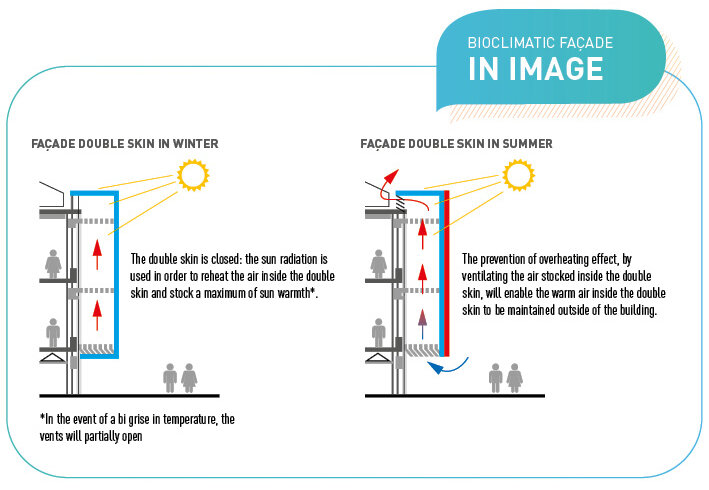By integrating a bioclimatic façade or double-skin façade to your building, it will enable you to harvest the building’s environment inputs and thermal advantages to offer users the appropriate level of comfort. The main goals of this solution are:

The bioclimatic façade can enhance the aesthetics of an existing façade and interact with the building’s environment.
By harvesting natural energy inputs and by removing the need of traditional air conditioning, artificial light or heating systems, through a buffer space concept, the bioclimatic façade will save energy and limit the building’s environmental footprint.
The building’s occupants will benefit from the natural inputs (light, fresh air, heat) promoted by the bioclimatic façade while limiting the discomfort effects, such as:
The bioclimatic façade is essentially glazed and composed of fix or mobile vents to harvest the natural energy inputs. The façade vents can be opened to let the warm or cold air circulate within the double-skin space.
A bioclimatic façade can be easily and seamlessly installed over an existing structure.
During winter, the vents are generally closed to reheat the buffer space of the double-skin, which will then reheat the inside of the building.
During summer, the vents are opened to ventilate the warm air stocked in the double-skin buffer space.
However, the vents can also be opened in winter or be closed in summer, according to the temperature and rain sensors and the automation system to let in fresh air and naturally ventilate or prevent temperature to lower/increase drastically and respect the occupants’ controls.